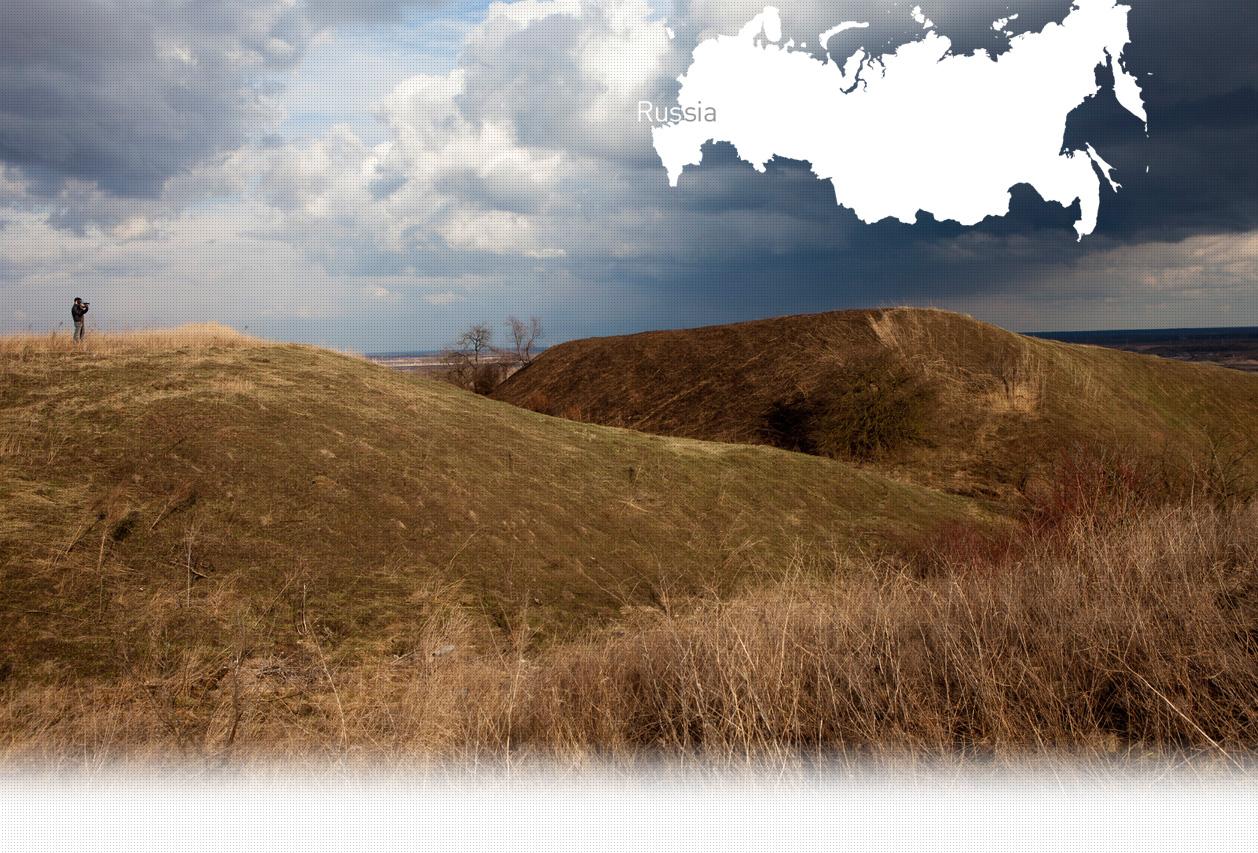

1 Killing site(s)
Igor O., born in 1930, remembered of that day: « We were playing near that site and we could see a closed truck arrive. We could see a woman dressed in black lined up. She was tearing her hair out. When we heard a shot, we ran away. We stayed hidden in the ditch nearby while they were shooting. I can’t tell you exactly how long it lasted.
YIU: Was it a German truck?
W: Yes, it was a covered German truck. I can’t tell you the details because I was just a child at that time. Once they left, we wanted to go take a look but we didn’t. Five days later, when we came to this place, the pit had already been covered. ” (Witness n°539, interviewed in Niny, on August 18, 2015)
« In autumn 1942, I don’t remember the exact date, someone came to requisition me. They made me get in the vehicle and took me in the direction of the vegetables gardens that belonged to the Peredovaya kolkhoz. On the site, there was a big square pit, about 20m large and 20m long. There were bodies covered with a thin layer of soil inside. It was forbidden to try to identify the people and I don’t know either how many bodies there were. There were about 17 of us men requisitioned to fill the pit. I didn’t know the names of the others because I was not a native of that village. I know that among those people, many were evacuated from Leningrad. I don’t know when they were shot.” [Deposition of the requisitioned villager, Stepan K., made on July 18, 1943; RG-22.002M, 7021-17/9 (district A)]
Niny is located about 220km southwest of Stavropol. Historically home to Russians, there were no Jewish families living in the village prior to the war. Once the war broke out, many Jewish refugees along with other refugees, passed by the village. Some of them settled there for a while and didn’t have time to evacuate. According to the witnesses, the Jews lived among the villagers and worked in the kolkhoz. The Germans occupied the territory in August 1942.
From their field research, Yahad-In Unum found that the Jewish refugees were taken by truck to the execution site. As was rather common for this region, the children were poisoned, while the adults were shot. According to Witness n°543, the Jewish children were first taken for one night to the pigsty, anauxiliary building located not far from the killing site, where it is said they were poisoned. The following day, their bodies were taken by truck and thrown in the pit where the adults had been shot. It is said that the Jewish refugees from the vicinity were also executed in Niny.
Do you have additional information regarding a village that you would like to share with Yahad ?
Please contact us at contact@yahadinunum.org
or by calling Yahad – In Unum at +33 (0) 1 53 20 13 17